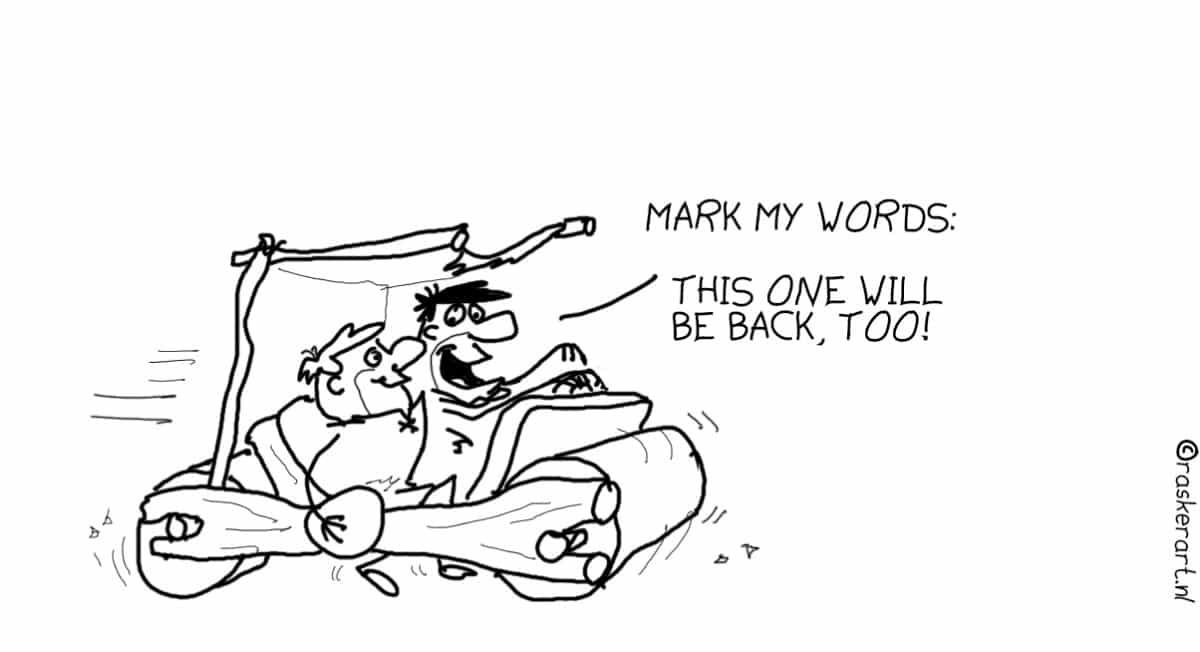
One heat record after another was broken this week. In order to stay cool, everyone who had air-conditioning turned the temperature down a notch or two. But that has its price. We all use about 20 percent of the world’s electricity supply in order to be able to sit comfortably at home or in the office. This includes not only air conditioners but also electric fans. The International Energy Agency, which is the source of these figures, expects that global warming will triple the amount of energy needed to cool buildings between now and 2050.
This is not insignificant, but we would not be Innovation Origins if we did not also look at solutions. One of them is Sound Energy. With their invention, this start-up from Enschede converts residual heat into cooling. And they don’t need electricity for that. (Read about how it it works here.) The only problem is that this system is quite expensive for the average consumer: 40 to 45 thousand euros. At the moment the team is working on a cheaper and less powerful version, however this system is still a while away.
Air conditioning turned off?
So, just turn off the air conditioning and read under the cool foliage of a tree about the kind of innovations that will see the light of day in the near future? We don’t know whether or not you all really did that this week en masse … But what we do know is that your sustainability is an important issue. You happily clicked on the series about batteries vs hydrogen. (Tomorrow a new column by Auke Hoekstra will undoubtedly address this topic.) But it’s not just articles on sustainable cars that are doing well, because this week you were also reading about the means of transport par excellence in the Netherlands: the bicycle.
As part of the Smart Cycling Futures study, colleges, universities, municipalities and companies are investigating innovative approaches to cycling problems in the Netherlands. As cycling is so common here, researchers have in the past done very little research as far as the two-wheeler is concerned. What to do about the bulging bicycle parking places in large cities? Or bike paths that are getting busier and busier, resulting in veritable bike traffic jams? And how can cyclists travel more effectively from one municipality to another? The participants in the study are seeking answers to these and many other questions.

More bikes than inhabitants
As the old cliché goes, The Netherlands has more bicycles than it has inhabitants. But what about bicycle usage in the rest of Europe? For example, the Dutch are said to have an average of 1.3 bicycles per inhabitant. The Netherlands is leading the list when it comes to the bicycle as the preferred mode of transport. (The Dutch use bicycles for 27 percent of their journeys.) Denmark follows with almost 20 percent. In third place is Germany, where they pick up one of those steel horses 10% of the time that they are out and about. Closely followed by Finland and Sweden, who are just under 10 per cent.

Berlin bikini tour
The amount of people who are hopping on their bikes is on the increase in Germany. Take Berlin for instance, where the number of cyclists has risen by about 8 percent in comparison with last year. The municipality is therefore endeavouring to make the German capital more bicycle-friendly. Yet according to the Berlin Cyclists’ Union, they have not fully succeeded in doing that quite yet. Nicolas Linck, chairman of the Cyclists’ Union, told the Dutch news service NOS that at present, riding a two-wheeler is more of a thing for young, fit and sporty people. In order to encourage the city council to make the cycle paths safe for everyone, people in swimsuits and bikini’s got on their bikes. That’s how they demonstrated how vulnerable cyclists are in German traffic.
Bikini Bike Ride Berlin! For safer cycling, against cars in the city, against body-shaming. Today at 3 pm, at Frankfurter Tor. The sun is shining and Apps don’t have a clue : ) pic.twitter.com/NRP1zPmlZ2
— Katja Täubert (@KatjaTaeubert) July 14, 2019
https://platform.twitter.com/widgets.js
Belgium, land of bicycles?
The Belgians often leave their bicycles idle for this very same reason. According to figures from the Belgian Institute for Road Safety, Belgians on bicycles are actually three times more likely to be harmed while cycling than the Dutch are. This is why the government is trying to encourage bicycle use instead of cars. The Flemish government, in particular, is attempting to achieve this through a variety of subsidies, discounts or tax breaks. It has also invested in addressing, among other things, dangerous bicycle paths. Part of the money has been used to keep cars out of the inner city of Leuven, after one year this has already resulted in 32 percent more cyclists. However, current investments are not enough according to the Flemish Minister for Mobility. The budget (currently 138.5 million euros) must be increased to around 300 million euros per year in order to make all bicycle paths in Flanders safe.

Daredevil Londoners
Cyclists are also struggling in other major European cities. Check out London cycling under the headline news, and you’ll find reports on cyclists that have been killed in collisions. Londoners (but also people from outside of the city) who are not deterred by this and still grab their bikes, may get in contact the London Cycling Campaign. This institution takes action with a view to making London a real cycling city and helps cyclists to plan routes which avoid dangerous spots.
Let’s face it, cycling is a lot healthier and better for the environment than a trip with a car. So let’s hope that European cities ( as well as American, Russian and Asian) will be able to get more people saddled up in the near future. Still haven’t seen enough bike statistics on your screen? Read more about the advantages of riding on two wheels here.




